The Conversation (Neag School’s Jaci VanHeest writes about how wearable technologies can impact top athletes)
Are White Coaches Fulfilling the Culture Needs of Black Athletes?

Editor’s Note: The following was originally published on the UConn Innovation Portal.
Joseph Cooper, an assistant professor of sport management and educational leadership in UConn’s Neag School of Education, is a co-investigator with Drew Brown, assistant Africana studies professor at the University of Delaware, on a grant from the American Athletic Conference to study the topic of whether and how white coaches are fulfilling the cultural needs of black college athletes.
Nine out of the 12 universities in the American Athletic Conference (AAC) have white football coaches, but many of the athletes on these teams are black, and the quality of the relationship between black college athletes and white coaches often impacts athletes’ developmental experiences in college and post-college, according to the researchers.
The quality of the relationship between black college athletes and white coaches often impacts athletes’ developmental experiences in college and post-college, according to the researchers.
Cooper and Brown will conduct interviews and administer surveys to college athletes from three different AAC schools to better understand if black college athletes feel their relationship with their white coaches fulfill their cultural needs.
The study will apply co-cultural communication theory, which studies how nondominant groups in society create alternative forms of communication to articulate their experiences. In addition, this study will incorporate critical race theory, which scrutinizes existing societal power structures that marginalize people of color and is germane to the study of the dynamic between white coaches and black college athletes. Thus, this study will explore the role race, culture, and communication styles play in the relationship between “in group” and “out group” members across the lines of race and sport role involvement.
After completing this study, Cooper and Brown will generate suggestions for the direction of future research in this area to improve these critical relationships.
Cooper received his Ph.D. in kinesiology and sport management and policy from the University of Georgia. His areas of interest are sport management, gender and race in sports, racism and other forms of oppression, higher education and qualitative research.
Access the original post on the UConn Innovation portal.
Thomas Levine Named Associate Editor of Teaching and Teacher Education
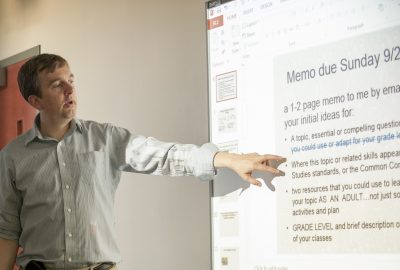
Associate Professor Thomas Levine in the Neag School’s Department of Curriculum and Instruction has been named an associate editor of Teaching and Teacher Education (TATE), an international, multidisciplinary journal concerned primarily with teachers, teaching, or teacher education.
“Teaching and Teacher Education aims to provide scholars and practitioners of teacher education with insights about teachers, about teaching, and about methods of helping pre- and in-service teachers to improve their work,” Levine says. “It has an interdisciplinary and international focus; authors work to contextualize their studies or frame them in ways that speak beyond the specific national context or discipline. The result has been an important contribution to the research base that supports teaching and teacher development.”
Levine says he expects that this role will allow him to make an important contribution to his field while serving as a steward helping the publication of worthwhile research. He also says he anticipates gaining insights that will help him as a scholar and professor committed to improving Neag School of Education’s teacher preparation program.
“I feel lucky to work at an institution where faculty, in spite of competing priorities, make time to continue developing our own program, as shown by Dorothea Anagnostopoulos’ success helping us redesign the teacher preparation program over the last several years,” says Levine. “I hope that my work will help me develop insights and contacts in the field that will benefit our program.”
Access the latest issue of TATE here.
Neag School Announces First Recipient of the Rogers Educational Innovation Fund
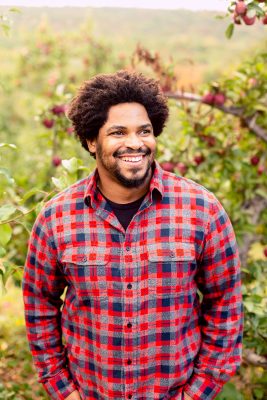
The Neag School of Education at UConn announces the inaugural recipient of the 2018 Rogers Educational Innovation Fund as Dwight Sharpe, an eighth-grade mathematics teacher at Woodrow Wilson Middle School in Middletown, Conn.
The Rogers Educational Innovation Fund, designated by Neag School of Education Professor Emeritus Vincent Rogers, provides a $5,000 award available annually in support of innovative projects carried out by Connecticut teachers at the elementary or middle-school levels. This gift is intended to support and expand the innovative, collaborative work of Connecticut’s classroom teachers and the Neag School of Education.
“Dwight Sharpe works tirelessly to find ways to actively engage his students, many of whom have traditionally been assessed as ‘below proficient’ on state standardized mathematics tests,” says Suzanne Wilson, chair of the Rogers Educational Innovation Fund award committee and chair of Neag School’s Department of Curriculum and Instruction. “Through his project, his students will believe they are capable of mastering math concepts through collaboration, questioning and problem solving; and, in so doing, demonstrate higher levels of engagement and achievement.”
Sharpe will receive $5,000 in support of his proposed project, titled “Accessing and Engaging in Mathematics Through Robotics and Computer Programming.” The goal of the project, which was selected from among more than 40 submissions, “is to explore and determine how robotics and computer programming can be embedded into middle school instruction to improve student engagement and achievement.”
Sharpe will be formally recognized at the 2018 Neag School Alumni Awards Celebration, taking place on the Storrs campus next month. Read more about the Rogers Fund at rogersfund.uconn.edu.
Giving Middle School Students the Tools for Success
UIC today (Neag School alumna Kimberly Lawless, an associate dean of research in the College of Education at the University of Illinois, is profiled about her research accomplishments)
International Student Inspired by U.S. Education System
UConn Today (Wei “Toby” Xinhai, a Neag School pre-teaching freshman from Hong Kong, dreams of being a math educator)
Ph.D. Student Co-Authors Newly Released Report to Congress
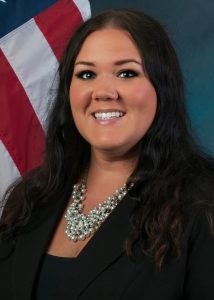
Thanks in part to the evaluation expertise of a doctoral student in the Neag School’s measurement, evaluation, and assessment (MEA) program, a recently released report from the U.S. Government Accountability Office (GAO) revealed that about 1 percent of enrollments in federal health-insurance plans in 2015 were potentially improper or fraudulent.
The report, a federal audit of the Affordable Care Act, was requested by Congress and released last month by the GAO — a nonpartisan agency that serves to investigate how the federal government spends taxpayer dollars. The GAO research team analyzed the most current data available, pulling together databases from multiple federal sources. It was as an intern this past summer with the GAO’s Forensic Audits and Investigative Services team in Washington, D.C., that Neag School Ph.D. candidate Kristen Juskiewicz assisted in executing the audit.
‘A Step Above’
The work began with the GAO research team working to identify any applications to the Federal Health-Insurance Marketplace that demonstrated an inconsistency, and then pulling samples of applicants from that 1 percent to try to determine the reasons behind those inconsistencies. Using the research methods and evaluation skills she had acquired in the MEA program, Juskiewicz took on the task of analyzing this sample data to look for patterns or anomalies in how the Center for Medicaid and Medicare Services processed the applications.
“These inconsistencies may have been generated due to applicants missing required documents, or one of the federal systems, such as the Social Security Administration, not recognizing the entry provided,” she says.
Juskiewicz also co-authored a number of internal reports, which served not only to document how the analysis was completed, but also to detail results and insights. “As an auditing agency, it is essential that teams at the GAO are meticulous in record-keeping and documentation,” she says. In addition, she assisted in interviewing stakeholders about the application process and the sample data. Juskiewicz’ analysis of the sample cases served as the basis for the final report.
“I believe every student should try to complete an internship because practical experience solidifies the academic knowledge you receive at UConn.”
— Kristen Juskiewicz, doctoral candidate
Meanwhile, the GAO, she says, gave her the space she needed to apply her expertise to the project. “I was not told how to analyze the data, but rather asked to use my knowledge and skills to explore the data in the way I felt was best,” she says. “The trust and responsibility given to me increased my confidence in my abilities. I believe every student should try to complete an internship because practical experience solidifies the academic knowledge you receive at UConn.”
Juskiewicz credits her advisor, assistant professor Bianca Montrosse-Moorhead, as well as other Neag School faculty in the MEA program, with guiding her to take the right courses and giving her the skills she needed to be successful as an intern.
“Dr. Montrosse-Moorhead suggested I take a qualitative methods course to ensure I am well-rounded in my analytic abilities, since MEA is a quantitative-focused program,” Juskiewicz says. “This has been overwhelmingly helpful in both my GAO internship, as well as my internship in Summer 2016 with the U.S. Army Public Health Center in the Public Health Assessment Directorate. In both of my internships thus far, I have found that my quantitative knowledge developed via the MEA program has ensured I am not only on par with those in the workforce, but often a step above. I credit the MEA professors with their ability to not only teach us the skills we need, but additionally in keeping up with current methodology and techniques, allowing us as students to be consistently on the cutting edge of research.”
“I believe Kristen is a great example of how our MEA doctoral students are trained to combine evaluation methods, theory, and practice to answer important questions,” says Montrosse-Moorhead.
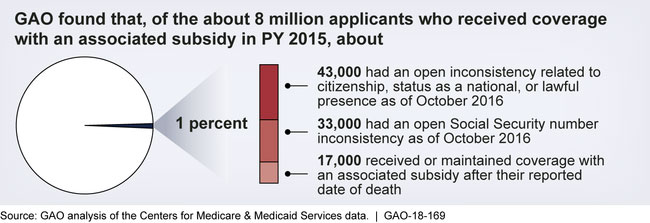 Putting Knowledge to the Test
Putting Knowledge to the Test
Prior to joining the Neag School’s doctoral program, Juskiewicz first began to understand the crucial role of assessment in education during her time working as a high school science teacher at Chicago Public Schools.
“Working in a ‘failing’ high-needs school, we found ourselves in a constant state of assessment. From these assessments, a great deal of data was produced that we as teachers were meant to use to correctively teach or better teach our students,” she says. “The problem was that we did not have the appropriate training to be able to investigate this data beyond descriptive statistics, such as means or standard deviations. We had a plethora of data that could show us trends and predictions — not to mention the insight it could give us into improving our students’ learning — yet we could not access it with the skills we currently possessed.”
It was at that point, she says, that she knew she wanted to obtain those skills, and discovered the MEA program at the Neag School. “I realized this program could offer me the skills necessary to utilize data efficiently,” she says. “I knew UConn had a reputation for being a tier-1 research institute and felt the resources available here would be a good fit for me.”
Now focused on completing her dissertation and graduating this year, Juskiewicz views this internship as central to her doctoral experience, providing her with “the opportunity to take the information I have learned over my time at UConn and apply it in a practical setting,” she says. “My classes at UConn gave me the opportunity to attain a great deal of knowledge surrounding research methods, measurement, evaluation, and assessment, and this internship allowed me to put that knowledge to the test.”
View the GAO’s report here.
Figure Skating by the Book

Editor’s Note: The following piece was originally published on UConn Today.
Behind the artistry of today’s Olympic figure skaters lies some serious science. A new book by UConn professor Jaci VanHeest will make the research underlying elite skaters’ training accessible for the first time to coaches and athletes everywhere.
“Every sport has its mythology, but the science is critical,” says VanHeest.
Figure skating is one of the oldest Olympic sports, but there’s not a lot written about the science of it. Coaches who want data-driven training techniques have very little information to go on. Jaci VanHeest, associate professor of educational psychology in the Neag School of Education with a joint appointment in kinesiology in the College of Agriculture, Health, and Natural Resources, specializes in the performance of elite athletes and is a member of the Medicine and Science committee for USA Figure Skating. She and her coauthor and former graduate student in exercise physiology, Jason Vescovi, now with Skate Canada, wrote The Handbook of Sports Medicine and Science, Figure Skatingto fill that gap.
“We can use technology not only to research elite athletes, but to help developing athletes attain their peak performance.”
— Jaci VanHeest, associate professor,
educational psychology
The book will be the first text on the market to provide in-depth coverage on topics related to health, training, and competition specific to figure skating. Plus, each chapter has been co-authored with experts in that specialty so the book contains cutting-edge information on a comprehensive range of topics, from maintaining the ideal energy balance during different stages of training to handling jet lag before competitions.
The handbook will focus on the challenges of training skaters for the way the sport has evolved. Figure skating now emphasizes power in a way it hasn’t in the past.
“It’s astounding,” says VanHeest, who has consulted for U.S. Skating and worked with elite figure skaters to integrate energy balance and training demands. “You’re balancing on ice, which is slippery, and you’re having to manage this shoe, and you’re doing multiple jumps with multiple turns,” she says.
It used to be that a double jump, when the skater spun twice before landing, was interesting, but now people are routinely doing quadruple jumps. And combinations. “A triple lutz, followed by a triple toe loop, back to back. That’s physically quite demanding. We never thought about that in the Nancy Kerrigan-Tonya Harding era,” she says.
Skaters have always had to translate linear motion into a vertical, spinning motion, and complete jumps by landing on a slippery surface without falling. But now they need much more power to complete much more demanding jumps, while retaining the grace that has charmed generations of fans.
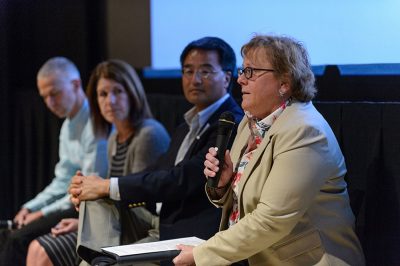
Another change in figure skating is the use of technology. The boom in wearable sport technology means athletes are able to measure and quantify almost everything about their performance, from the speed of their heartbeat to the force of their jump. A coach can now tag a skater’s joints, record that skater moving, and then use an app to convert the video into a stick figure. The app can reveal how much force the athlete needed to do the jump, their acceleration, and their body position. The coach can even use that to compare their athlete with an elite athlete known for their expertise in that move to see if there’s anything that could be done differently and better. And this can all happen at the rink, within minutes. The chapter of the Handbook that focuses on biomechanics was co-written by researchers at the University of Delaware who specialize in the analysis of figure skaters’ movements.
Other chapters will focus on injuries and injury prevention. Figure skating athletes train from childhood, through adolescence and into early adulthood, and special consideration throughout their growth and development can reduce injury risk while optimizing performance.
VanHeest’s work with skaters has focused on energy balance and nutrient timing. For example, she uses wearable devices to track an athlete’s breathing, heart rate, body temperature and movement, and has them keep a diary of what they eat and when. With that information, she can graph out their energy intake and output hour by hour, and give advice as to how they can time their meals appropriately to maximize their endurance and stamina, and maintain body condition.
“We’ve spent a lot of time – 60, 70 years of research – getting athletes to periodize training to focus on endurance, weight training, skill. And we’ve spent a lot of time researching nutrition. But we haven’t spent much time helping athletes work on on how those things need to work together! This book will help athletes think holistically, to optimize,” she says.
Technology is a theme throughout the book, and every chapter asks the reader to think about how technology can help them achieve their goals.
“We can use technology not only to research elite athletes, but to help developing athletes attain their peak performance,” VanHeest says. And her goals for the book are similar. She wants coaches to read it, and partner with scientists to help athletes. And she wants the book to inspire researchers, too.
“Hopefully, young, budding scientists in sport will read it and keep making sport better and safer,” VanHeest says.
The handbook will be available this spring from Routledge.
Figure Skating by the Book
UConn Today (A new book on Olympic ice skating by Neag School’s Jaci VanHeest is featured)
Op-ed: How Chronic Absenteeism Threatens America’s Schools
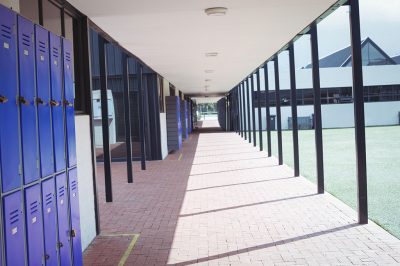
Editor’s Note: Shaun M. Dougherty, Neag School assistant professor of education and public policy, co-writes with Michael Gottfried, associate professor of education at the University of California, Santa Barbara, this piece originally published for The Conversation. Read the original article.
Each year in the United States, approximately 5 to 7.5 million students in the nation’s K-12 schools miss a month or more of school. That means 150 to 225 million instructional days are lost every school year.
The problem is more pronounced in low-income urban communities throughout the country. In elementary school, for example, students who live in poverty were found to be as much as five times more likely to be chronically absent than their advantaged peers.
The reasons students miss school can vary, according to “The Importance of Being in School: A Report on Absenteeism in the Nation’s Public Schools.” The reasons range from circumstances, such as family responsibilities or unstable living arrangements, or the need to work, that prevent students from coming to school, to unsafe conditions or bullying that lead students to avoid school. Or, students may simply not see the value of going to school, the report states.
Students lose the most when it comes to being chronically absent, which is often defined as missing 10 percent or more of the total school days in a year. That translates to 18 days or more in a typical 180-day school year.
At present the national graduation rate stands at about 83 percent. This means nearly 1 in 5 students is not graduating and is not likely to enter the workforce and earn a living wage.
For instance, students with more school absences have lower test scores and grades, greater chances of dropping out of high school, and, subsequently, higher odds of future unemployment.
These disparities are a big deal, especially since there are already notable differences in performance based on family income, even by the time that children first enter school.
This is why — as researchers who have focused on absenteeism and better ways to keep students engaged — we found the recent report about students graduating from Ballou High School in Washington, D.C., despite missing large amounts of school so concerning.
Pressure to pass students
The report — prepared by a consulting firm for the Office of the State Superintendent of Education — found that institutional pressure contributed to a “culture of passing.” It was a culture created in part by “aggressive graduation and promotion goals” developed by the central office at District of Columbia Public Schools. It was also a culture in which passing and graduating students was “expected, sometimes in contradiction to standards of academic rigor and integrity.”
“School leaders across DCPS were evaluated based in part on measures of promotion and [graduation rates], while teachers at 10 schools were evaluated based on passing percentage,” the report found. Additionally, some of the goals “appeared unachievable” based on the previous academic performance of the students in question.
The report also found that “empathy for the extreme needs” of students, especially those who were poor, also contributed to the culture of passing.
Ballou was not the only school that became susceptible to this culture of passing. Indeed, the report found that out of 2,758 District of Columbia Public Schools graduates in the 2016-2017 school year, 937 — or 34 percent — “graduated with the assistance of policy violations.” The report found 572 students had passed at least one course with 30 or more absences — a violation of district policy.
Part of a larger problem
The Ballou scandal, which last week reportedly prompted an FBI investigation, is now poised to join a series of similar education scandals across the nation, including test-score forgery scandals in Atlanta and Philadelphia.
While testing has been a major focus of education policy discussions, chronic absenteeism is increasingly a focal point, too, and rightly so. However, the danger is that as we put more focus and weight on a single measure, such as attendance or graduation, the more that measure is subject to corruption and manipulation. At least this is the central tenet of what is known as Campbell’s Law.
A major reason why graduation is seen as such an important indicator of school success is because a high school diploma is now considered a minimum qualification to enter the workforce.
This is in stark contrast to the 1970s, when having a high school diploma was enough to help you enter a middle-class profession.
At present the national graduation rate stands at about 83 percent. This means nearly 1 in 5 students is not graduating and is not likely to enter the workforce and earn a living wage. Those who never graduate pose a growing social cost on society. Specifically, they are more likely to rely on social services and commit crimes at a higher rate.
Increasing the graduation rate is a natural solution to this problem, but only if the diploma actually reflects the minimum skills expected by employers. Without policies and practices that improve graduation rates through real improvements in learning and credit acquisition, it is likely that we will continue to hear about schools like Ballou. These will be schools where educators — when faced with rising requirements and existing structural challenges — elect to fabricate success rather than report the real and sometimes intractable challenges of getting high school-aged youth to show up and complete assignments.
So what can be done to prevent similar scandals such as the one that has currently engulfed Ballou?
Interventions work
First, educators and policymakers should recognize low-cost interventions that have been shown to reduce absenteeism. These include things as simple as sending parents a single postcard reminder about the importance of attending school. This was shown to increase attendance by 2.4 percent. A similar intervention aimed at correcting parents’ misunderstandings about how many total absences their children have accumulated reduced absenteeism by 10 percent.
Second, policymakers must be cautious about punitive measures that may create the impression that they are cracking down on truancy but have no effect. One study, for instance, did not find any evidence that students who faced court sanctions — from $25 parental fines for each missed school day to community service and even confinement — did any better or worse in school than those who were not called into court.
Third, rather than focusing on policies that set an arbitrary threshold for how many days a student can miss before the student loses credit for a course, educators and policymakers need to focus on more effective ways to keep students engaged and feeling safe in school.
Fourth, education leaders must tackle real-life situations that cause students to miss school in the first place, such as “the strain of having to take care of younger siblings,” as D.C. Public Schools Chancellor Antwan Wilson testified recently in the wake of the Ballou scandal.
Solutions to chronic absenteeism may not be easy to come by but they exist. But much like chronically absent students, we can’t expect those solutions to just show up. We have to be willing to find them.
![]()
Shaun M. Dougherty, assistant professor of education and public policy, University of Connecticut
This article was originally published on The Conversation. Read the original article.
